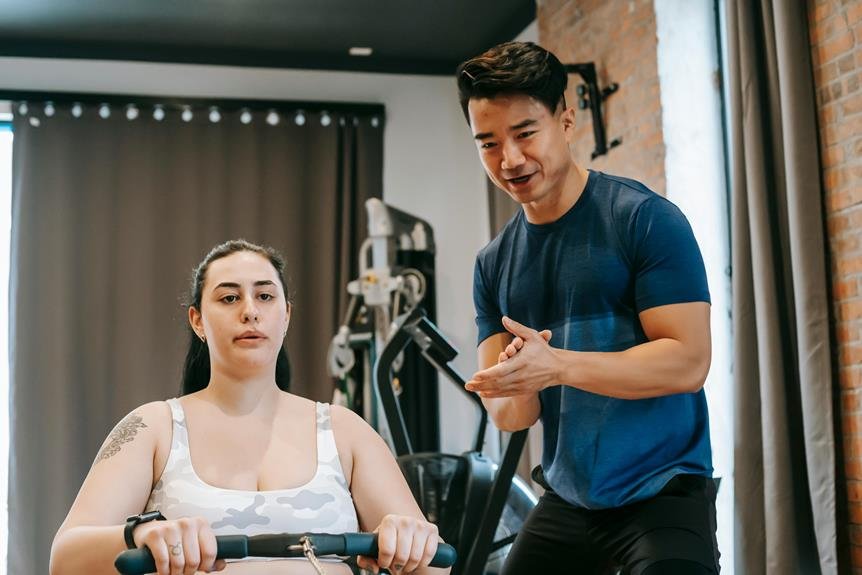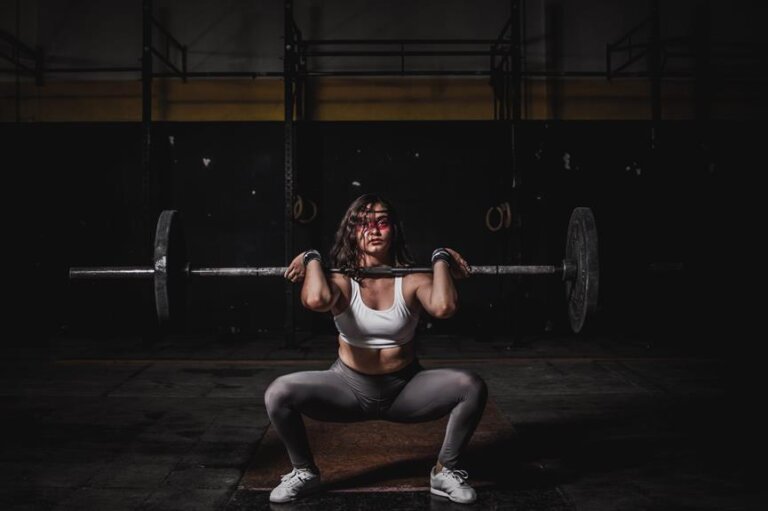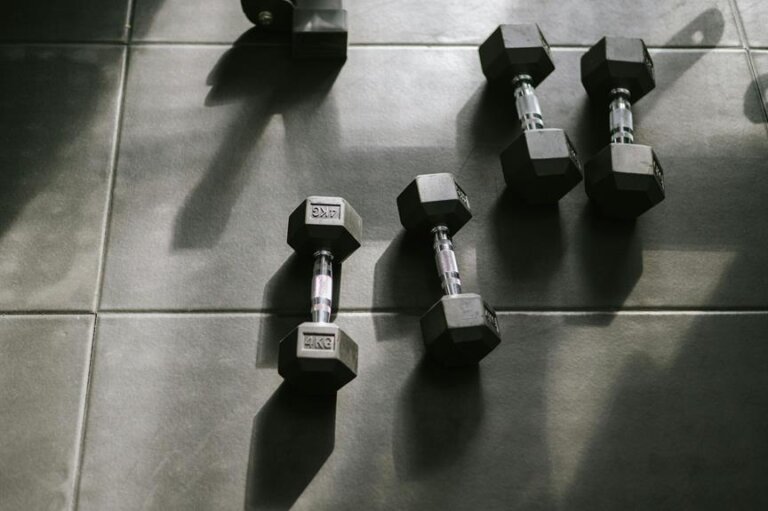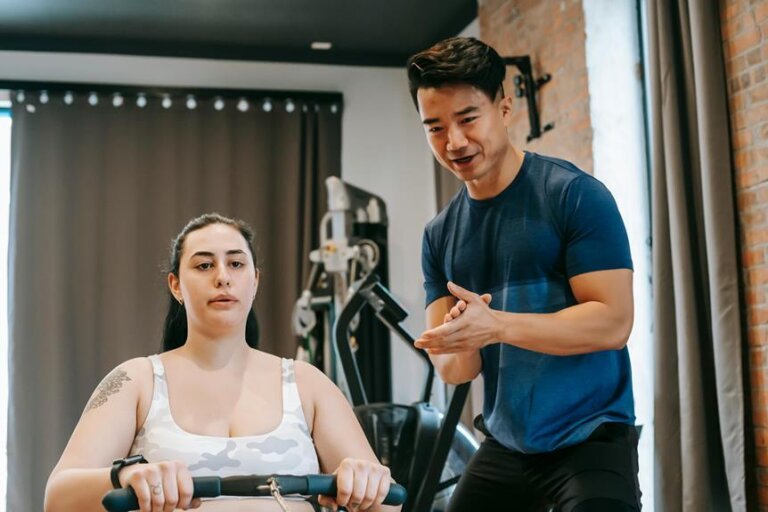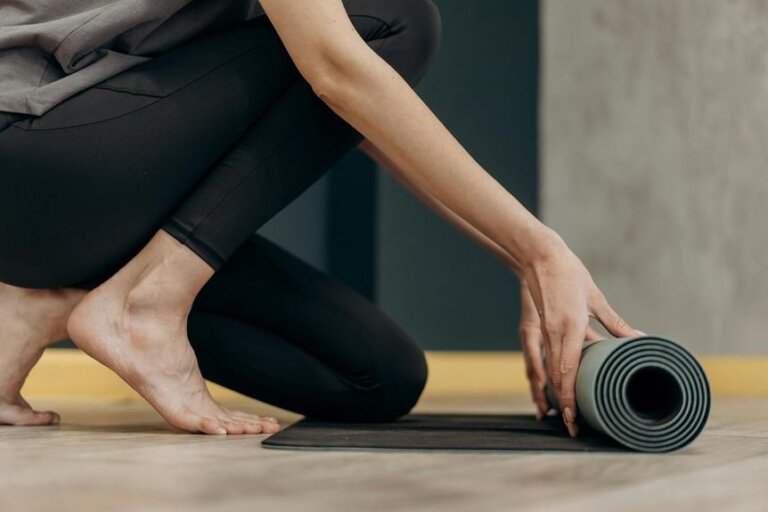Busting Myths: Common Misconceptions About Women and Fitness
Ever heard the theory that weightlifting makes women bulky? It's time we dissect this common myth.
You've probably been told to stick with cardio, avoiding weights for fear of bulking up. But is there any truth behind this claim? Or is it just another fitness myth that's been holding women back from reaching their full potential?
In our quest for clarity, we'll challenge this and other common misconceptions about women and fitness, inviting you to rethink what you thought you knew.
Hang tight, we're about to turn some fitness stereotypes upside down.
The 'Weightlifting Makes Women Bulky' Myth
Contrary to popular belief, weightlifting won't turn you into a muscle-bound behemoth. This myth, perpetuated by societal stereotypes and misinformation, has been holding women back from experiencing the full benefits of a balanced fitness regimen.
Lifting weights doesn't automatically lead to a bulky physique. You see, females have significantly less testosterone than males – the hormone largely responsible for massive muscle growth. Hence, unless you're supplementing with hormones or lifting extraordinarily heavy weights, you're unlikely to Hulk out.
Instead, you'll likely notice yourself becoming stronger, your body taking on a more toned and defined shape. Lean muscle burns more calories than fat, even at rest, so you'll also experience an uptick in your metabolism. Weightlifting can also boost your bone density, which is particularly crucial for women as they age and face the risk of osteoporosis.
The Cardio-Only Exercise Misconception
You might be under the impression that focusing solely on cardio exercises will help you achieve your fitness goals faster, but this is another common misconception. While cardio is crucial for heart health and aids in weight loss, it's not the only form of exercise you need in your routine.
The belief that cardio-only workouts are the key to fitness can lead to a one-dimensional workout regime, ignoring the importance of strength training. It's not about ditching cardio, but rather, balancing it with other forms of exercise. You're likely to hit a plateau if you're only doing cardio, as your body adapts to the same workout routine.
Strength training is an important component of a balanced fitness plan. It can help improve your body composition, boost your metabolism, and increase your physical strength. Plus, it's essential for bone health, especially in women who are at a higher risk of osteoporosis.
The Myth of Spot Reduction
You've likely heard of the idea that you can lose fat in a specific area by targeting it with certain exercises, but this is actually a myth. It's important to understand that fat distribution in your body doesn't work that way.
Instead, effective full-body workouts are key to overall fat loss and toning.
Debunking Spot Reduction Beliefs
Despite its popularity in fitness circles, the idea of spot reduction—losing fat from a specific area of your body through targeted exercises—is nothing more than a myth.
You might've heard that endless crunches will whittle your waistline or that tricep dips will banish arm fat. Unfortunately, that's not how your body works. Fat loss can't be localized through exercise.
When you work out, your body burns fat overall, not just from the area you're focusing on. So, while targeted exercises can strengthen and tone the muscles underneath your fat, they can't selectively burn fat from specific areas.
It's important to approach fitness with a full-body perspective, emphasizing overall fat loss and muscle gain, rather than chasing the myth of spot reduction.
Understanding Fat Distribution
Let's delve into the concept of fat distribution, a biological process that debunks the myth of spot reduction. Your body doesn't choose where to lose fat from when you exercise a specific muscle group. In reality, your genetics largely determine your fat distribution patterns.
When you shed pounds, you're reducing fat cells across your entire body, not just in one area. You might think doing endless crunches will whittle your waistline, but the truth is, it's not that simple. You can't control where your body burns fat, but you can control your overall body fat through a balanced diet and regular exercise.
Effective Full-Body Workouts
Busting the myth of spot reduction, effective full-body workouts can help you reduce overall body fat and achieve a more toned physique. You can't just target one area for fat loss. It's a whole-body process, and your genetics largely determine where you'll lose fat first.
So, rather than focusing on one area, concentrate on full-body workouts. These involve large muscle groups and can burn more calories. Try incorporating strength training with weights, high-intensity interval training (HIIT), or circuit training into your routine. They'll help you build muscle, which in turn boosts your metabolism, helping you burn more calories even at rest.
It's about overall health and fitness, not spot reduction. So, get moving and embrace the full-body approach to fitness.
The Fear of High-Protein Diets
Many women shy away from high-protein diets, wrongly fearing they'll bulk up like bodybuilders. But here's the truth: protein won't turn you into the Hulk overnight. It's a critical nutrient that fuels your body, helps repair muscles after a workout, and keeps you feeling fuller for longer.
Let's bust this myth wide open. What really contributes to muscle mass is strength training, combined with a surplus of calories, not just high protein intake. You won't suddenly gain massive muscles from a protein-rich diet. In fact, protein can aid in weight loss efforts by promoting satiety and maintaining lean muscle mass.
Don't be scared of protein, it's your friend! A balanced diet, including a healthy dose of protein, is key to overall fitness and health. It's important to remember that protein needs can vary based on your weight, age, and activity level. So, don't shy away from it. Consult a nutritionist or a fitness expert to determine the right amount of protein for you.
Misconceptions About Women's Metabolic Rates
You've probably heard it said that women naturally have slower metabolic rates than men.
But is this really the case?
Let's clear up some common myths and understand the real factors that affect women's metabolism.
Understanding Metabolic Rate Differences
Despite common beliefs, women's metabolic rates aren't necessarily slower than men's. In fact, metabolic rates vary from person to person, regardless of gender.
What's important to understand is that metabolic rate is determined by factors like age, muscle mass, and physical activity level, not just by gender.
Factors Affecting Women's Metabolism
Let's debunk some myths and dig into the real factors affecting women's metabolism, setting the record straight on common misconceptions. It's not all about gender. Age, genetics, and activity levels play a significant role too.
As you age, your metabolic rate naturally slows down, and that's true for both genders. Your genes can also influence how quickly you burn calories, but it's not a life sentence. You can boost your metabolism by increasing your physical activity. The more active you are, the more calories you burn.
And don't forget nutrition. Eating a balanced diet fuels your body, helping your metabolism work efficiently. So, while being a woman might impact your metabolic rate, it's just one piece of the puzzle. Don't let gender stereotypes limit your fitness goals.
Debunking Metabolism Myths
Now, it's time to bust some popular myths about women's metabolic rates that often lead to misconceptions. You've probably heard that a slow metabolism is a woman's fate after hitting 40. That's not true! While metabolism does slow somewhat with age, it's not a drastic drop unless you're inactive.
Another myth is that thin people have faster metabolisms. In reality, the more muscle you have, the higher your metabolic rate, regardless of your size. So don't shy away from weight training, it won't make you 'bulky', but it will boost your metabolism.
Lastly, don't fall for the myth that skipping meals will help you lose weight. It can actually slow your metabolism down. So, keep these facts in mind, and don't let misconceptions guide your fitness journey.
The 'No Pain, No Gain' Fallacy
You've probably heard the saying 'no pain, no gain' and believe it's the only way to achieve fitness goals, but this is a widespread misconception. Pain shouldn't be the benchmark for progress, nor should it be a constant companion in your fitness journey. Pushing your body to its absolute limit every time can lead to injuries, burnouts and complications in the long run.
A more accurate motto might be 'No Effort, No Gain'. Fitness is about consistency, not intensity. It's about making subtle lifestyle changes that you can stick to, not drastic ones that you'll abandon in a week.
You can absolutely get fit without hurting yourself. Listen to your body. If something hurts, it's often a sign that you're doing something wrong or pushing too hard. Workouts should challenge you, yes, but they shouldn't leave you in agony.
Forget the 'no pain, no gain' fallacy. Fitness isn't about suffering, it's about improving your health and enjoying the process. Exercise in a way that feels good, is sustainable, and keeps you coming back for more. That's the real secret to long-term success.
The Myth of the 'Ideal' Fitness Body
Building on the idea of sustainable and enjoyable fitness, it's crucial to debunk another prevalent myth: the notion of an 'ideal' fitness body. You've seen it everywhere – on magazine covers, social media feeds, gym posters. This 'ideal' is often portrayed as a woman with a slender waist, toned muscles, and zero body fat. But remember, this image is an unattainable and unrealistic standard for most people.
The truth is, there's no such thing as an 'ideal' fitness body. Fitness isn't one-size-fits-all; it's unique to each individual. You mightn't have a six-pack or run a marathon, but that doesn't mean you're not fit. Fitness is about how you feel, how strong you are, and how well you can perform daily activities. It's about enhancing your quality of life and longevity, not just looking a certain way.
Don't let this myth discourage you. Embrace your body, work with what you've got, and strive for your version of fitness. Remember, you're exercising for health and happiness, not to fit into an unrealistic mold. So, ditch the 'ideal' fitness body myth and focus on what truly matters – your wellbeing.
Busting the Age-Related Exercise Myth
Shattering another fitness misconception, let's tackle the age-related exercise myth which falsely suggests that it's too late to start exercising after a certain age. Listen up, it's never too late to start exercising, no matter how many candles were on your last birthday cake. You're never too old to reap the benefits of regular physical activity.
Don't buy into the myth that age is a valid excuse to avoid the gym. Yes, your body changes as you age, but exercise is a powerful tool to combat these changes. It can help maintain strength, flexibility, and balance, all of which are more important than ever as you age.
You might be thinking, 'But I can't do the same exercises I used to when I was younger.' That's okay. There's no need to run a marathon or bench press twice your weight. Start with gentle exercises like walking, yoga, or swimming. Every step, stretch, or stroke counts.
Frequently Asked Questions
Do Men and Women Need Different Types of Exercises for Fitness?"
No, men and women don't necessarily need different types of exercises for fitness. Your routine should be based on personal goals, fitness level, and preferences, not your gender. It's about individual needs, not stereotypes.
How Frequently Should Women Exercise to Maintain Optimal Health?"
You're curious about the ideal exercise frequency for women, right? Well, most experts recommend that you should be active for at least 30 minutes a day, five days a week, to maintain optimal health.
What Is the Impact of Menstrual Cycle on Women's Fitness Regime?"
Your menstrual cycle shouldn't largely impact your fitness regime. Hormonal shifts may affect energy levels and mood, but you're not less capable of working out. It's about listening to your body and adjusting as needed.
Are There Any Specific Exercises That Can Help Women During Pregnancy?"
Yes, there are specific exercises beneficial during pregnancy. Prenatal yoga, swimming, and walking can be great. However, you should always consult with your healthcare provider before starting any new exercise regimen while pregnant.
How Does Menopause Affect a Woman's Fitness and How Can Exercise Help?"
Menopause can make maintaining fitness harder, but don't despair. Regular exercise helps manage symptoms, boosts mood, and keeps weight in check. Strength training protects bone health while cardio improves heart health. You've got this!
Conclusion
So, you've been fed a lot of myths about women and fitness, but it's time to bust them.
You won't get bulky from weightlifting, cardio isn't the only way to stay fit, and spot reduction isn't real.
High-protein diets aren't scary, your metabolism isn't out to get you, and no pain doesn't mean no gain.
Forget the 'ideal' fitness body and don't let age deter you.
Embrace the truths, dispel the misconceptions, and redefine your fitness journey.
